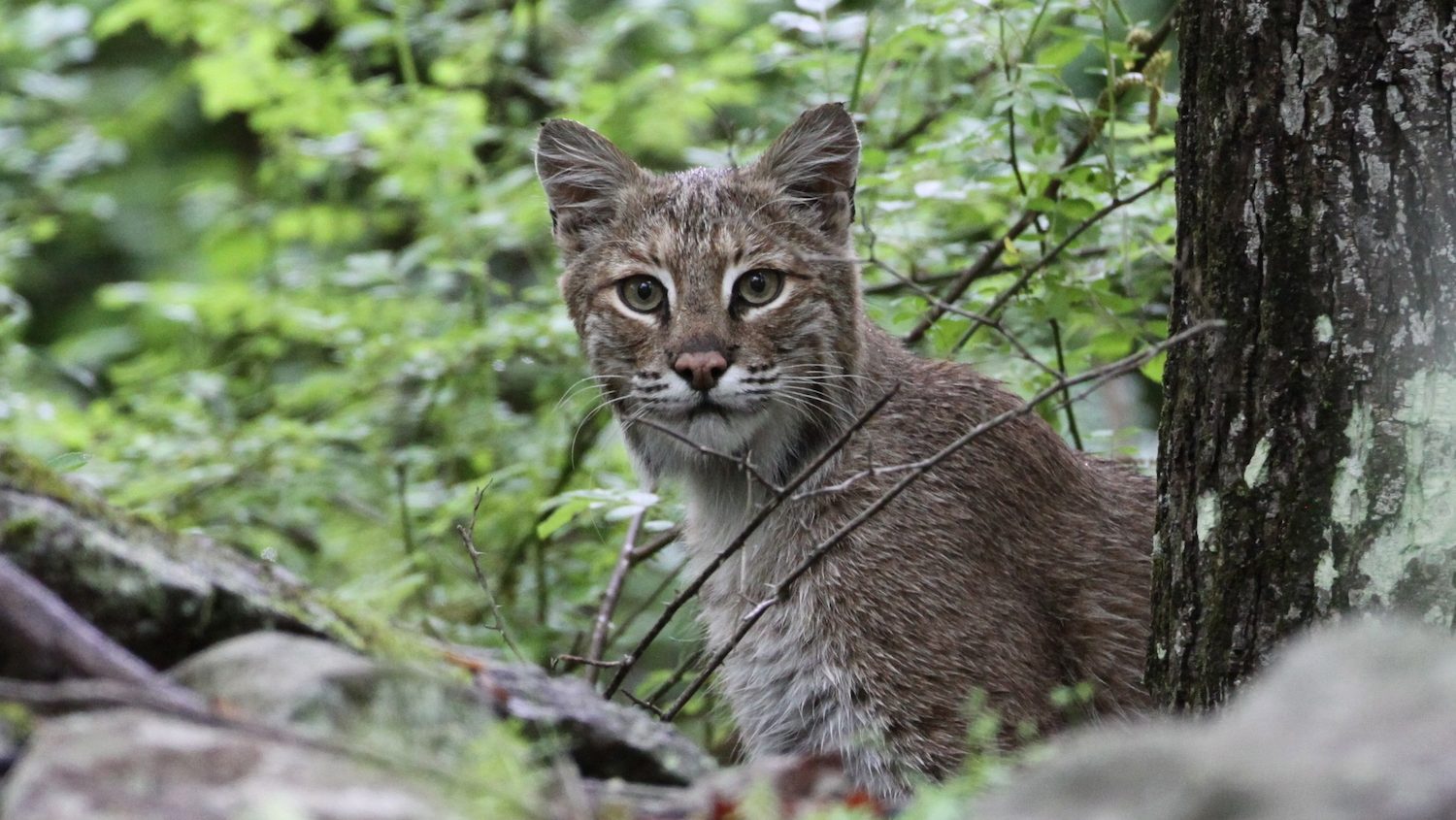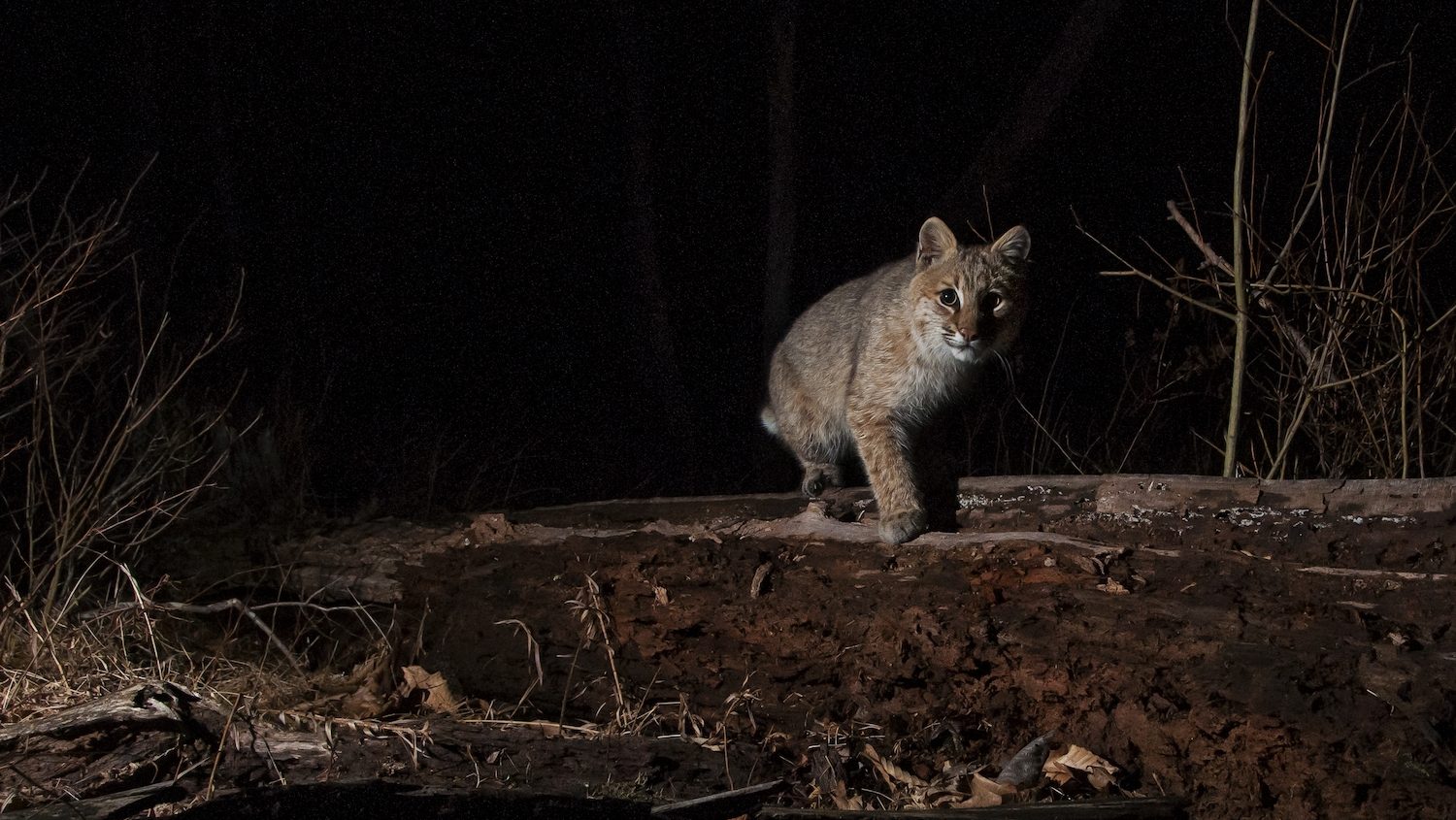I raised my binoculars, expecting to get a view of a mule deer. I often spotted them in this little valley, and when I saw the tan form, I knew what it was. Or thought I knew. Because as I focused on the animal, something seemed off. And then it moved. It had a long tail.
A mountain lion. While the encounter only lasted seconds – the big cat quickly bounded away – it remains one of my favorite wildlife sightings.
I saw this lion in the canyon country of southwestern Idaho. It may have been a spectacular sight, but no one questioned me. Mountain lions are fairly common, if seldom seen, in Idaho.
On the other side of the country, mountain lion sightings evoke a fiery passion. Many fervently believe mountain lions stalk much of the eastern United States, including the most densely populated state, New Jersey.
Idaho’s Owyhee County, where I saw my first mountain lion, is larger than the entire state of New Jersey. And it is home to fewer than 13,000 people. There’s plenty of space for a mountain lion to hide. In New Jersey, with 9.25 million people? Much less so.
Still, sightings persist. Are there mountain lions in New Jersey? Is it even a remote possibility?

The Eastern Lion
I’ve followed the arguments over eastern mountain lions for decades. I grew up in the woods of Pennsylvania and know the strong opinions this topic generates. In fact, the first outdoor story I was ever paid to write – for Pennsylvania Afield (now Pennsylvania Outdoor News) in 1991 – was about mountain lion rumors in Pennsylvania.
I found it a fascinating subject. You could hear some wild stories sitting around small-town bars. The state game agency is unloading truckloads of mountain lions at night. Not only are there mountain lions, but also black panthers. That sort of thing.
But not all lion incidents could be so easily dismissed, told by serious hunters, naturalists and loggers. These were people who spent a lot of time in the woods and were not prone to Bigfoot-style tall tales.
Eric Olsen, director of conservation programs for The Nature Conservancy in New Jersey, has heard the stories, too. “I’ve talked to more people who believe they’ve seen mountain lions then I can count,” says Olsen. “It does make you think. But I’m a skeptic that there are mountain lions here in New Jersey.”

Mountain lions once ranged across much of the United States, but they were eradicated from most parts of the East by the early 1800s. The population in Florida has managed to hang on. Elsewhere, actual evidence – photographs, camera trap footage, verifiable signs – remains slim.
But there are actual instances that fuel hope. In 2011, a lion was confirmed to be in Connecticut. It had roamed from South Dakota through the Midwest and East. (The full story is masterfully told in Will Stolzenburg’s book, Heart of a Lion). With many western populations of mountain lions thriving, individuals could disperse and find abundant white-tailed deer in the East. But could they survive and thrive there?
The Connecticut lion could not: it was killed by a car strike.

“There are places in New Jersey big enough to sustain a mountain lion or two,” says Olsen. “But there are still people who reside in those landscapes. There are still roads. I would love to think that New Jersey could sustain mountain lions. But the hard evidence has not been found.”
He notes that biologists have utilized scat-sniffing dogs to find evidence of bobcats (more on this species later). The Nature Conservancy and other organizations have wildlife cameras at road-stream crossings, at preserves and in other areas used by wildlife. And still: no evidence.
I’m a skeptic too, in no small part because of my experience with mountain lions in the western United States. They are certainly elusive and difficult to spot. Even where they’re common, you rarely if ever catch a glimpse of one. They often roam in some of the largest wildernesses and national forests in the continental United States.
While sightings may not be common, people do see them, photograph them, find easily verifiable kills and tracks and scat. Animals get killed on the road. There’s never any doubt. They’re here.
So what exactly is going on with mountain lion sightings in the eastern U.S.?

A Case of Mistaken Identity?
I pose the question to my friend and former Nature Conservancy forester Mike Eckley. Eckley has spent years on forest projects in Penn’s Woods, including the area in the central part of the state known as the “Pennsylvania Wilds.” He tells me he’s never seen any evidence, either, but has heard many stories from reliable sources.
“A key thing to remember is that there are a lot of people who are into exotic, wild pets,” says Eckley, now a lecturer in forestry at Penn State-Dubois. “Sometimes these animals can escape or be intentionally released. A lot of sightings are actually near urban areas. People might see a mountain lion that’s a released pet, and then these animals tend to quickly perish.”
It brings back a memory from my Pennsylvania youth, when my grandparents took me to visit a friend who kept a pet mountain lion in their backyard. I recall the fence made me a little nervous, and few would have been surprised if that cat escaped. Indeed, a lot of really weird animal sightings around the globe are due to animals escaped or released from private zoos and game farms.

But perhaps a more common reason for all the mountain lions is simple misidentification. Bobcat populations have increased significantly, a huge conservation success. In New Jersey, bobcats were extirpated but reintroduced in the 1970s. “There are now an estimated 350 bobcats in New Jersey,” says Olsen. “They’ve learned to live within human-inhabited landscapes.”
They are also shy and elusive, but people do encounter them. And it’s not unusual for people to mistake them for mountain lions. “If you’re seeing a bobcat for the first time, they’re larger than you think,” Olsen says. “I can understand how you could think it was a mountain lion.”
Eckley agrees. “I think misidentification is the most common explanation,” he says. “A lot of times, whether in an actual sighting or a camera trap, there’s no frame of reference. It looks like a really big cat.”

If you’re wondering, there are a couple of things that can help. First, refer to my previous field guide to commonly misidentified wildlife. Namely, this rule: “If in doubt, it’s probably the least exciting option.” You simply have to rule out bobcat before you can ID a cat as a cougar.
There’s one really simple distinguishing characteristic: the tail. The bobcat, as its name implies, has a bobbed tail, quite short and stubby. The mountain lion has an unmistakably long tail.
Assessments like this invariably make some people angry. Both Olsen and Eckley note they have not ruled out the possibility of mountain lions. They just want to see hard evidence.

Could Lions Return to the East?
To me, the most compelling question is not “Do mountain lions exist in New Jersey?” It’s: “Could they?”
I recently fished for brook trout in New Jersey’s portion of the Delaware Water Gap National Recreation Area. As I walked along beautiful mountain streams, I saw tracks of black bear and whitetail, and caught beautiful native trout. At times, it felt difficult to believe I was so close to millions of people.
Olsen notes that New Jersey is projected to be the first state in the nation to reach functional buildout, meaning nearly all land has been developed or conserved. But he notes that conservation has also been remarkably successful in such a densely populated state. New Jersey’s Green Acres program and many non-profit organizations, towns and counties have played important roles in preserving land.
TNC has protected more than 60,000 acres in New Jersey, no small task in a small, highly populated state with high property values. Lately, establishing corridors between conserved lands has taken on new importance with species needing space to move amidst dense roadways and challenging climate conditions. One such effort is protecting a 96,000-acre corridor for bobcats to move, known as “Bobcat Alley.”

“We’re protecting forests, fields and farmlands, preserving the best of what’s left for nature so species have the ability to thrive,” says Olsen. “And then we take it the next step: how can we connect protected areas in other states in the Appalachians?”
TNC’s work in the Appalachians focuses heavily on this connectivity. That gives species room to adapt and roam.
Mountain lions are famous roamers. They’re territorial, so young animals often strike out in search of new territory. If they came east, they’d need these connected lands. And they’d need prey. “The prey base is there,” says Olsen. “Our ecosystem is out of balance with too many deer. The forests are suffering as a result. The mountain lions would have plenty to eat.”
New Jersey's Bobcat Alley
Once nearly extinct in New Jersey, bobcats are trying to make a comeback. To survive, they need room to roam.
As such, the eastern mountain lion must be considered not a creature of the past or of myth, but a creature of hope.
“I bring a lot of skepticism to the topic, but I also do have hope,” says Olsen. “I hope that we will have done a good enough job of protecting and connecting habitat that there could be a time when lions arrive on their own – and survive and thrive here.”
For now, bobcats remain New Jersey’s only native wild feline, and even they can lose as much as 25 percent of their annual population to automobiles. Protecting and connecting strategic land in New Jersey and the Appalachian states is the best way to ensure they continue to have a home – and maybe even to give big cats with longer tails a chance to survive in the East.




with tens of thousands of hunter trail cameras in the woods some one would have a verifiable picture
A year or two before the Connecticut mountain lion was killed by a car, I did see a mountain lion that was in the Watchung Reservation when I was visiting a friend of mine that lived in Basking Ridge, New Jersey. I was looking out of her 2 floor window that overlooks the woods and seen this BIG cat with its long golden tail that came to the edge of the woods then quickly went back into the woods. I screamed there’s a cougar out there. What a majestic moment.